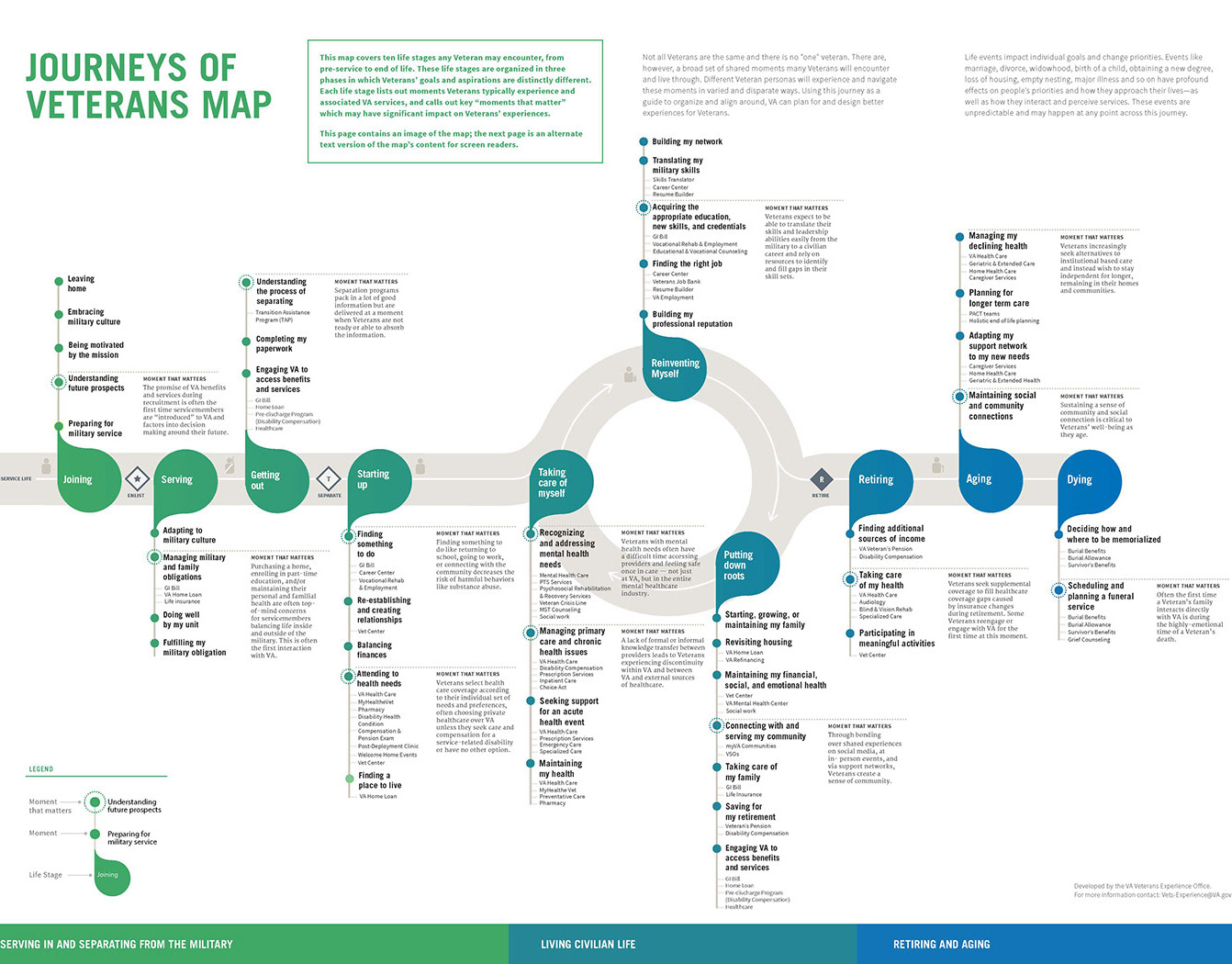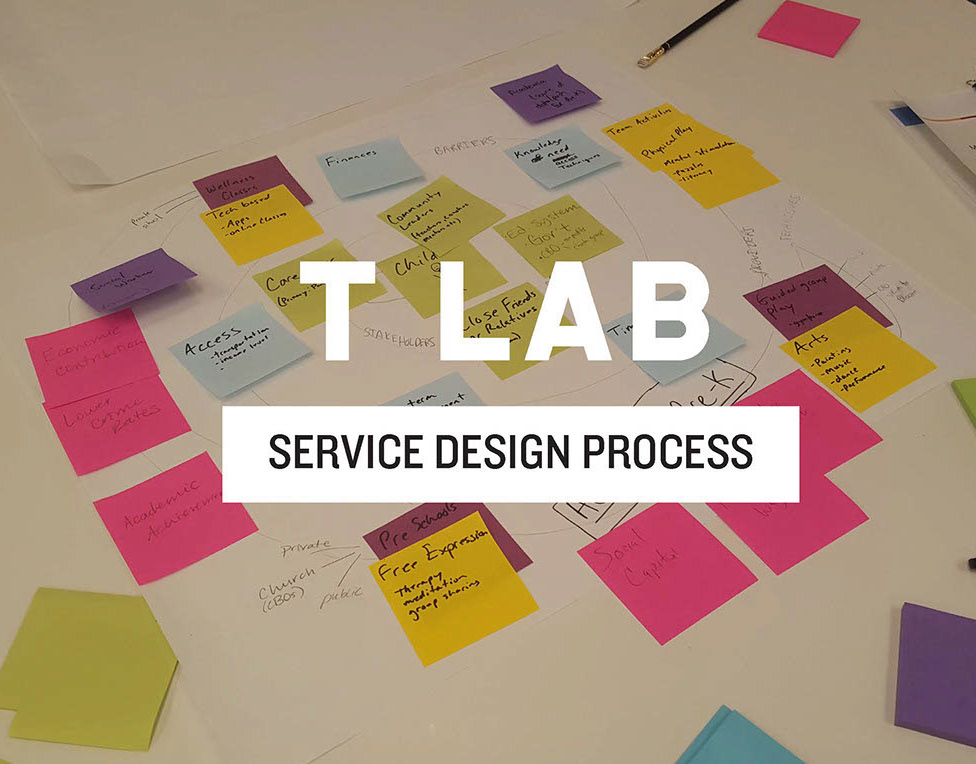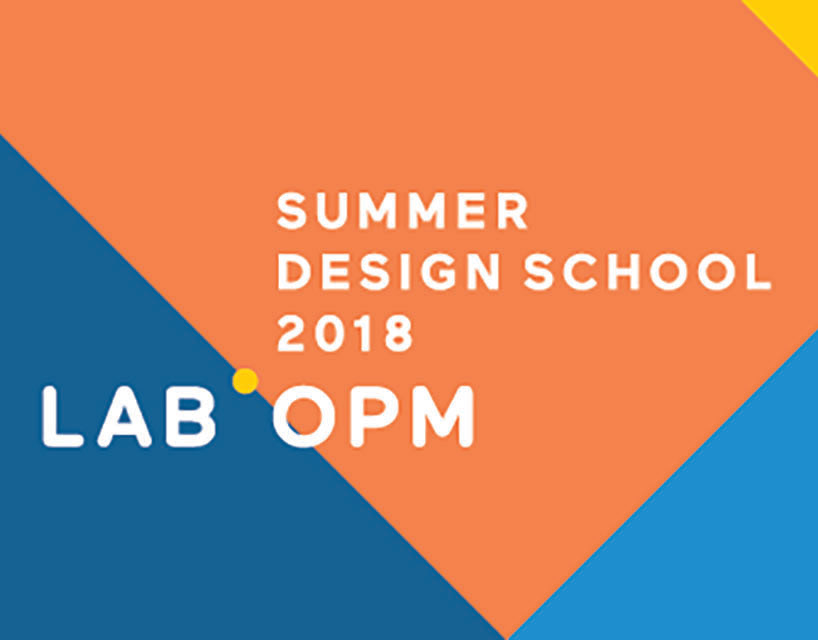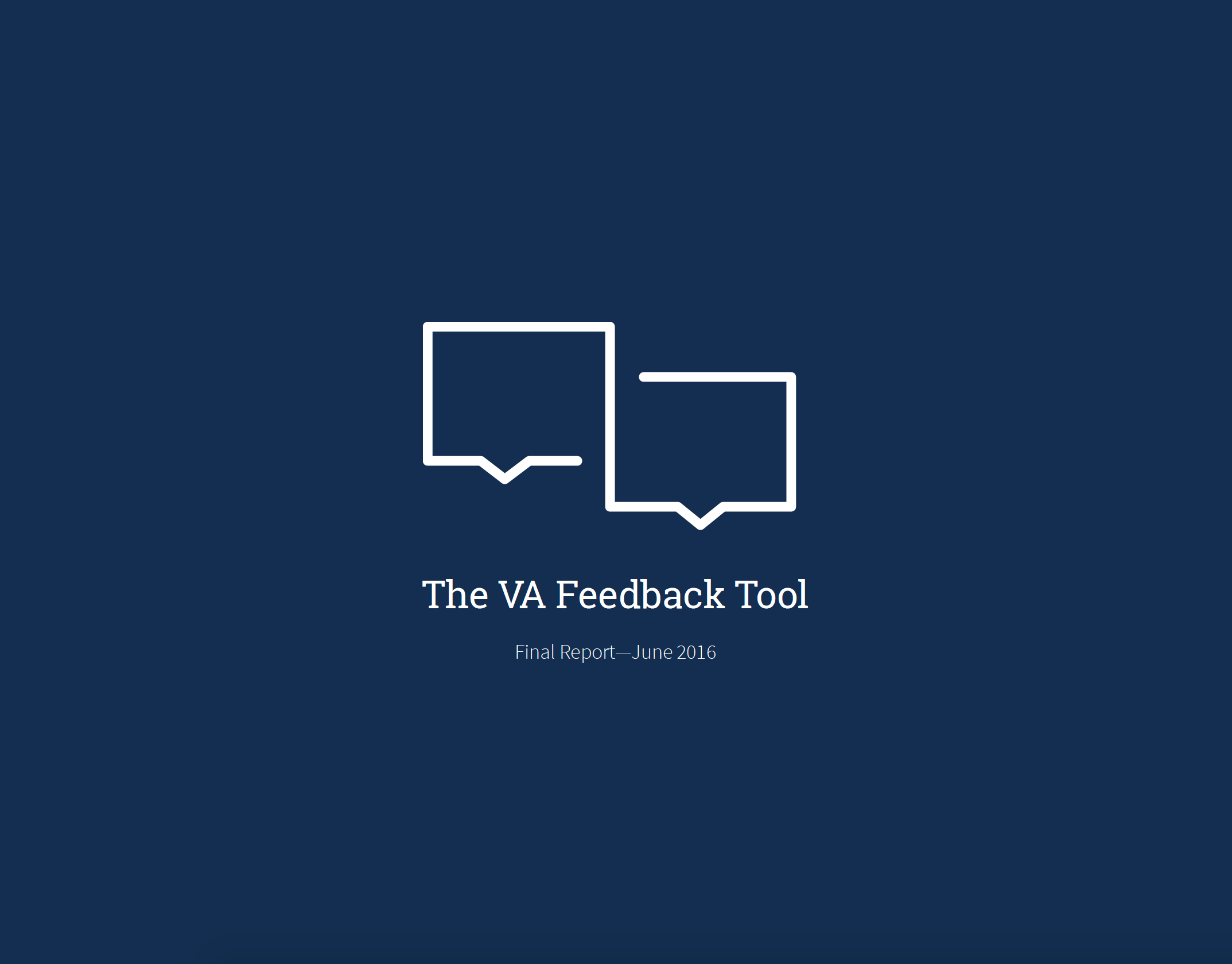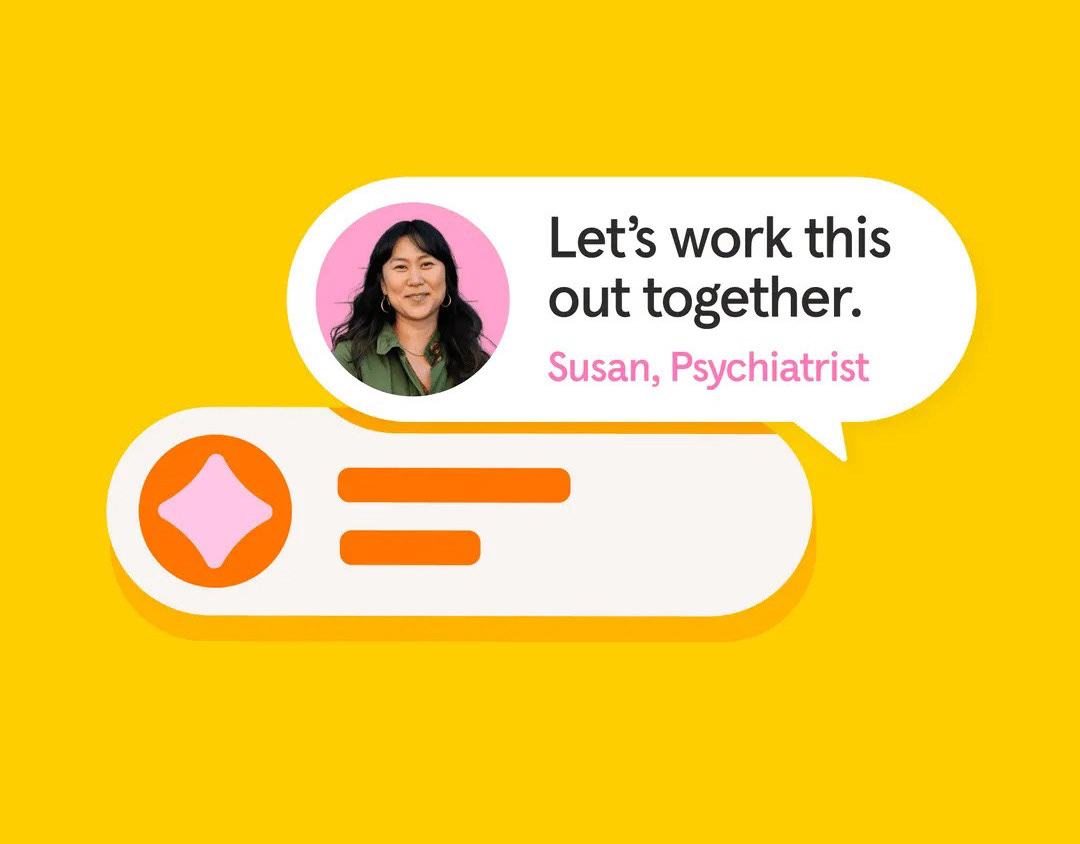Developing World Class Design at Scale
Working at Headspace—a brand beloved by millions—was both a privilege and a challenge. As a design leader, I shaped an award-winning, world-class product, collaborating with marketing, brand, content, and UX teams to craft engaging and clinically backed experiences. From negotiating roadmaps with engineers and product managers to partnering with clinicians, behavioral scientists, and creative directors, I helped bridge design, science, and business strategy to make mental healthcare more accessible, engaging, and effective.
My work was deeply customer-driven—leading research efforts that spanned user interviews, diary studies, large-scale surveys, pilots, and even clinical trials to understand both consumer and provider needs. Whether it was launching new markets, navigating compliance, or merging two billion-dollar tech giants, I thrived at the intersection of innovation, empathy, and execution.
Above all, I had the opportunity to learn, grow, and create alongside an incredible team—people motivated to use their creativity to help others feel better. What could be better than that?
Making Healthcare Engaging
Developing clinically programs that improve outcomes and engagement
At Headspace, I worked alongside behavioral scientists, clinicians, content strategists, and product designers to develop multi-week programs for Sleep, Stress, and CBT—a new approach for the brand. These programs weren’t just about content; they were clinically informed, user-centered experiences designed to boost engagement, retention, and mental health outcomes.
Since this was uncharted territory for Headspace, we took an iterative approach, continuously refining the programs through user feedback, behavioral data, and research insights. By balancing clinical rigor with engaging design, we created structured yet flexible experiences that helped users build sustainable mental wellness habits—setting a new precedent for how Headspace delivered care.

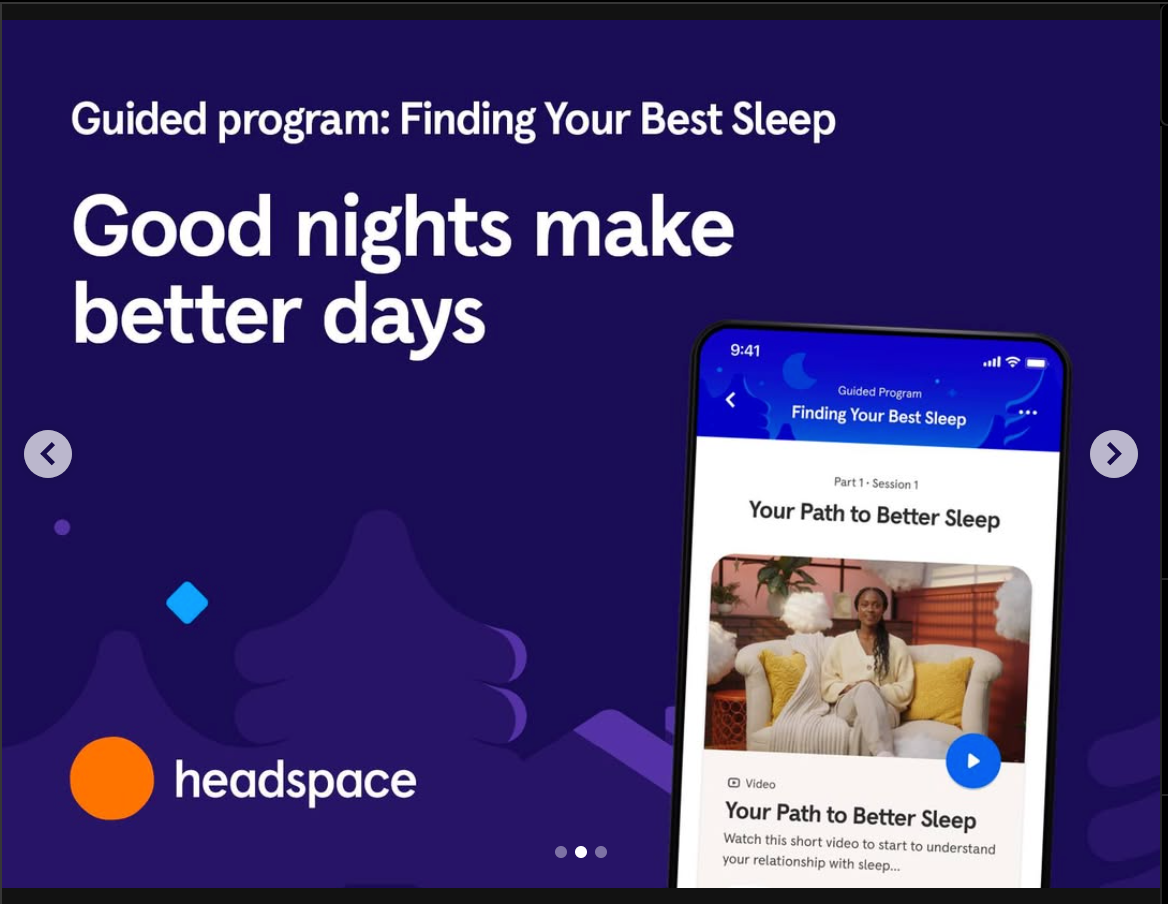

Building on the insight that users wanted clearer guidance on what to do next—rather than an overwhelming content library—the team revamped Headspace’s Today Tab, transforming the app’s landing page and home screen into a more curated, user-centric experience.
Through user testing, in-product experiments, A/B testing, and a leap of faith, we launched a beautifully redesigned UX that provided personalized recommendations, structured pathways, and a more intuitive interface. This update not only boosted engagement and retention but also reinforced Headspace’s commitment to making mental well-being more accessible, seamless, and effective for every user.

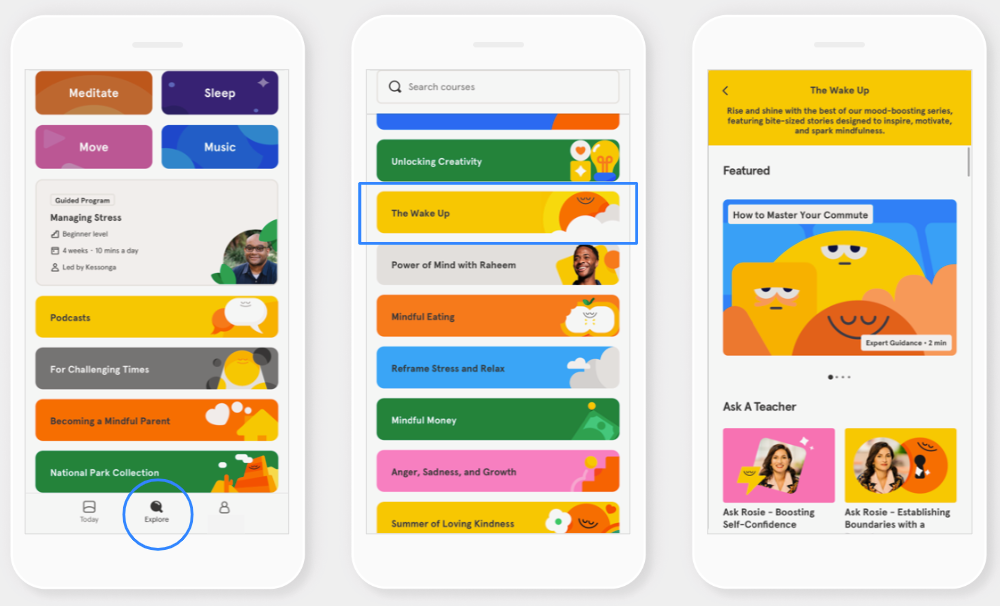


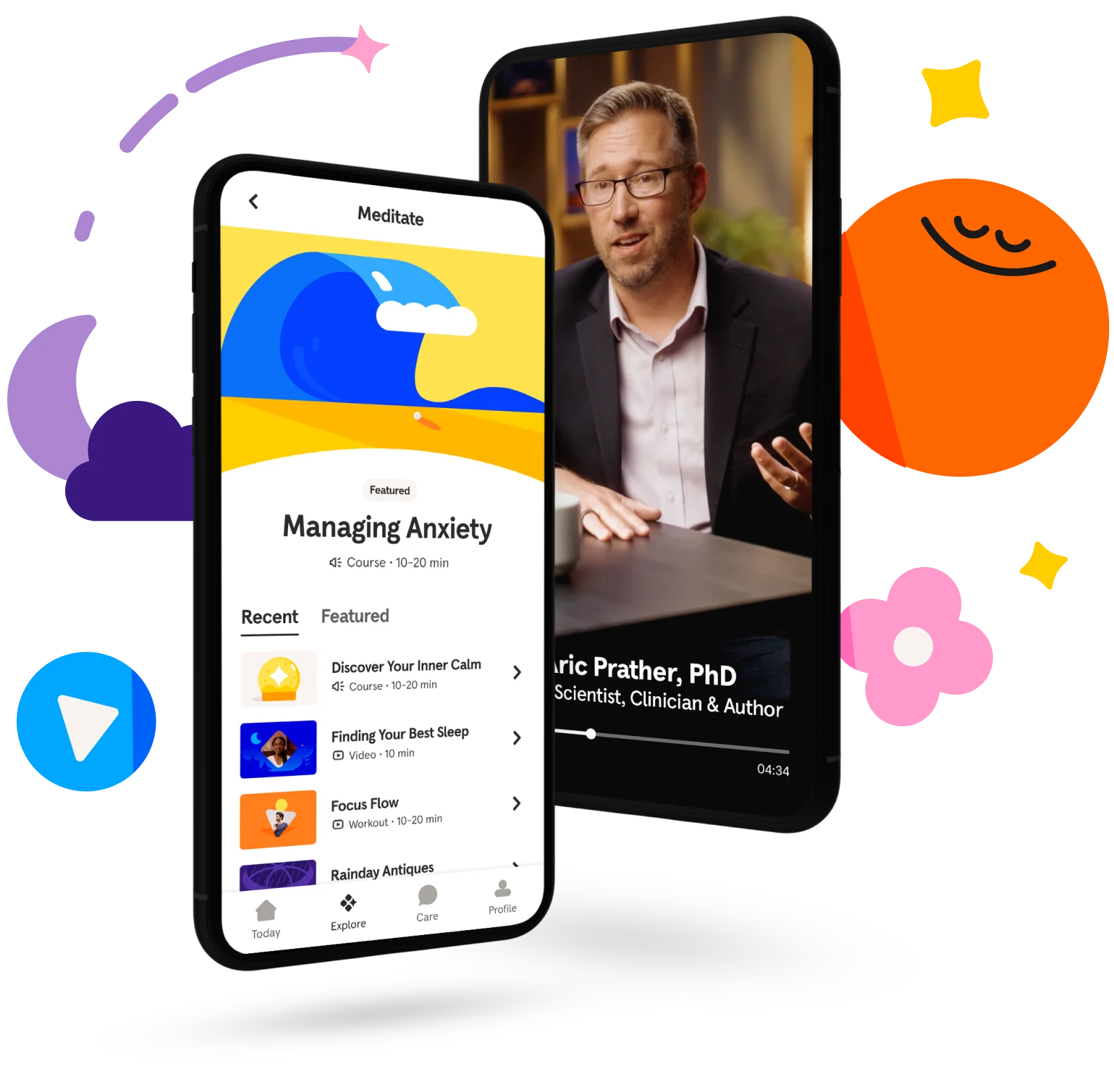
Building Headspace Care
Transforming Headspace from a Wellness Brand to a Mental Healthcare Platform
I played a key role in Headspace’s evolution from a content-driven wellness app to a comprehensive mental healthcare platform. As part of the original Headspace Care team—a “startup within a startup”—I helped design a program that paired coaching with multi-week content to support people experiencing chronic pain. The program proved successful in clinical trials, leading to a pilot for Virtual Therapy—a major step in expanding Headspace’s offerings beyond meditation and mindfulness. This success ultimately set the stage for Headspace’s merger with Ginger, integrating a vast and diverse network of coaches, therapists, and a proprietary provider platform into the ecosystem.
The merger unlocked new opportunities and challenges. I helped lead the team in developing the roadmap, features, and vision for merging care and content into a seamless experience. We launched the Care tab, bringing coaching directly into the app, and expanded direct-to-consumer coaching, making services more accessible beyond employer and insurance partnerships. Through collaboration and rapid experimentation, we developed workflows and UX that helped members:
- Find the right care option for their needs
- Onboard into the new service and match with a provider
- Engage with their provider through content recommendations, progress tracking, and check-ins
For providers, we designed tools to recommend content, monitor engagement, and offer encouragement or accountability—creating a truly integrated experience between coaching, therapy, and self-guided support.
This transformation positioned Headspace as a leader in digital mental healthcare, offering personalized, clinically backed support at scale.

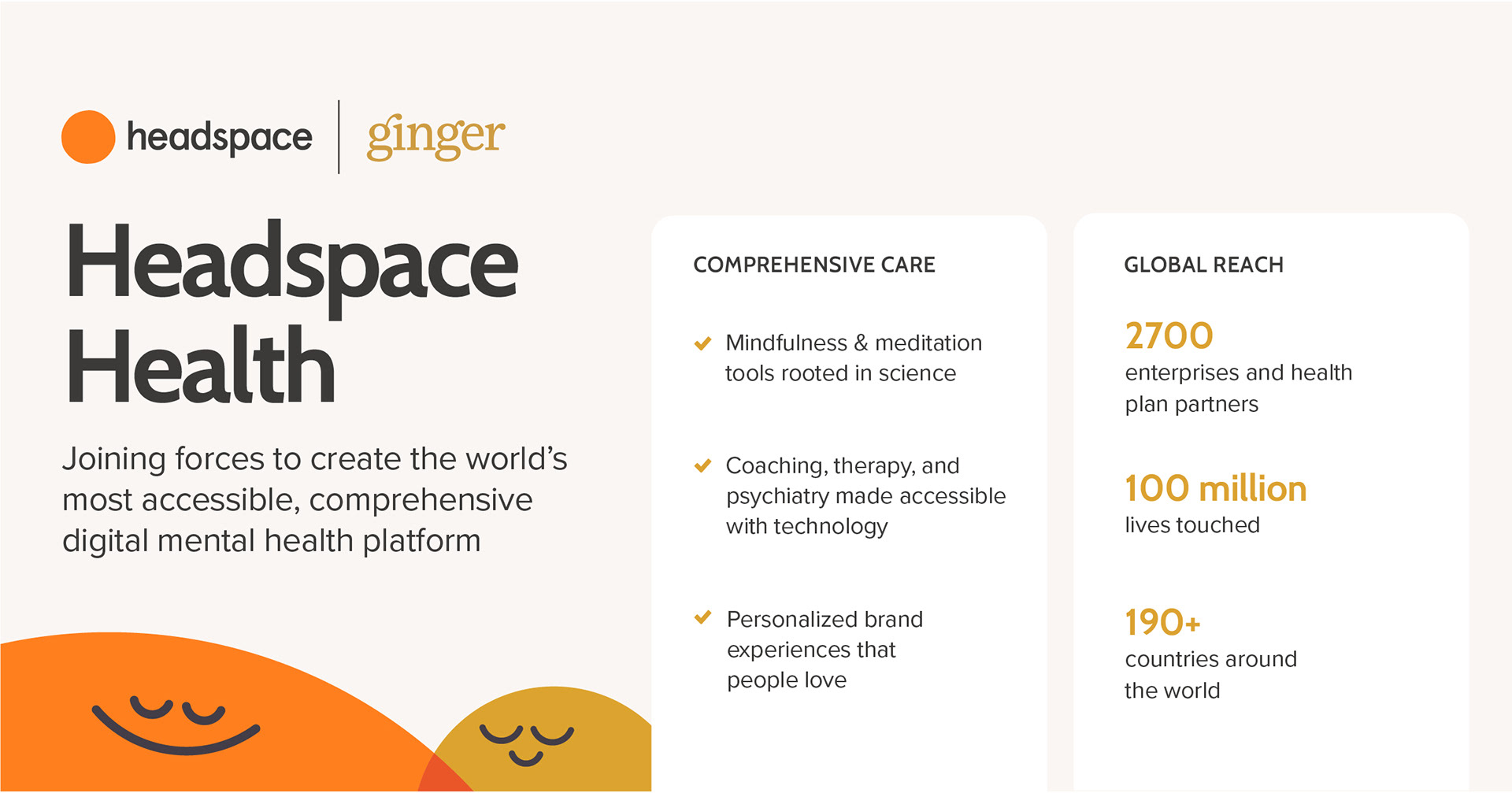
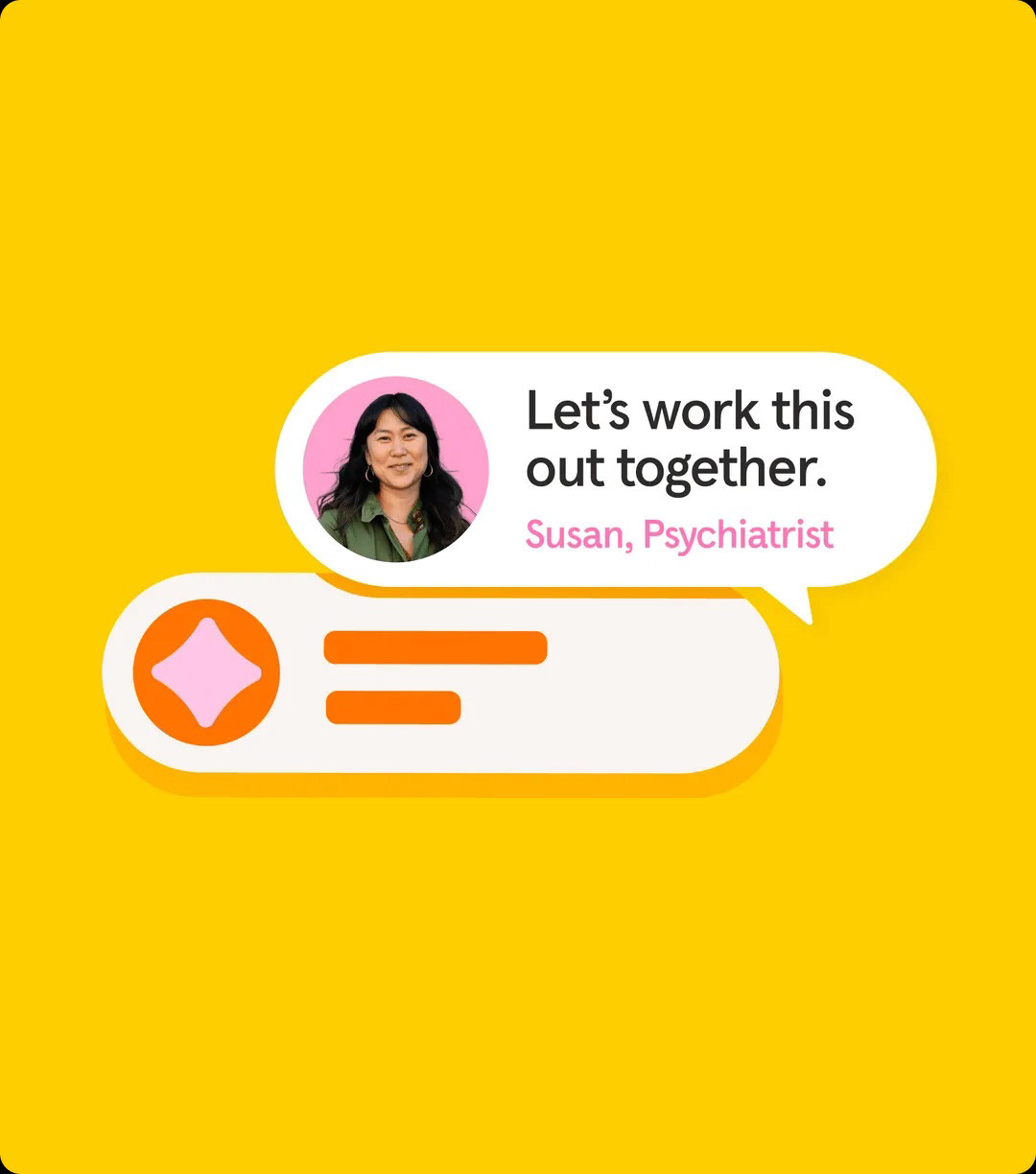

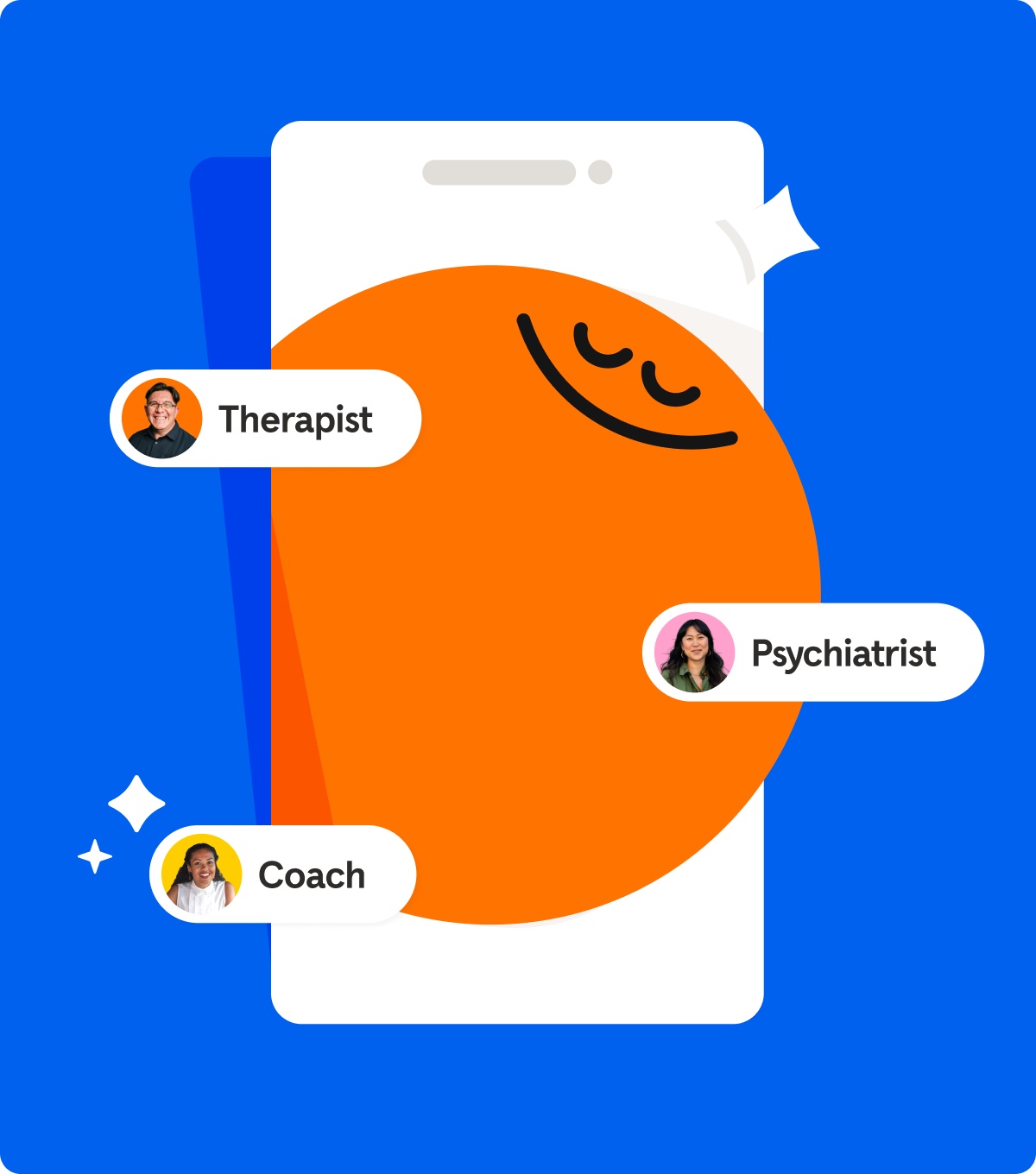

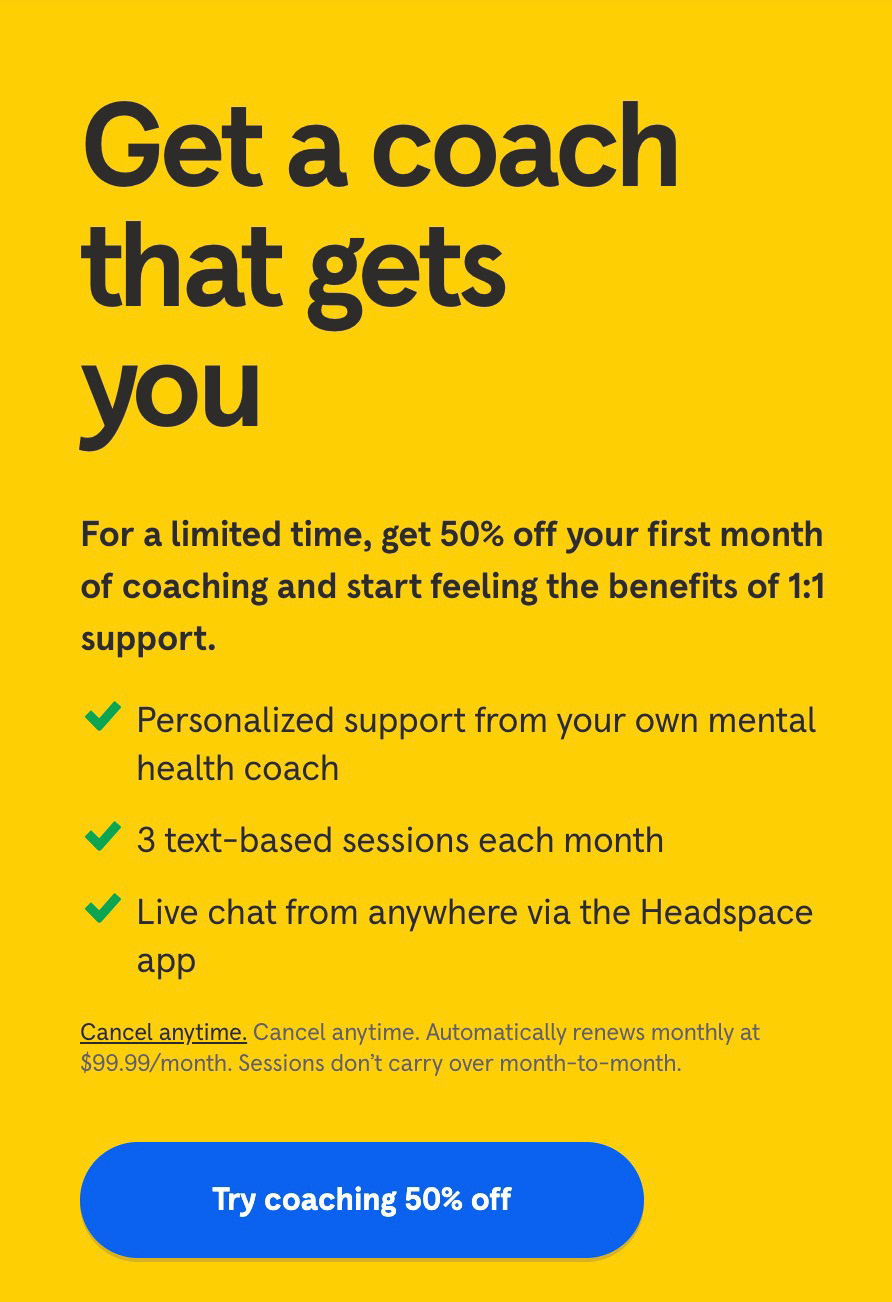
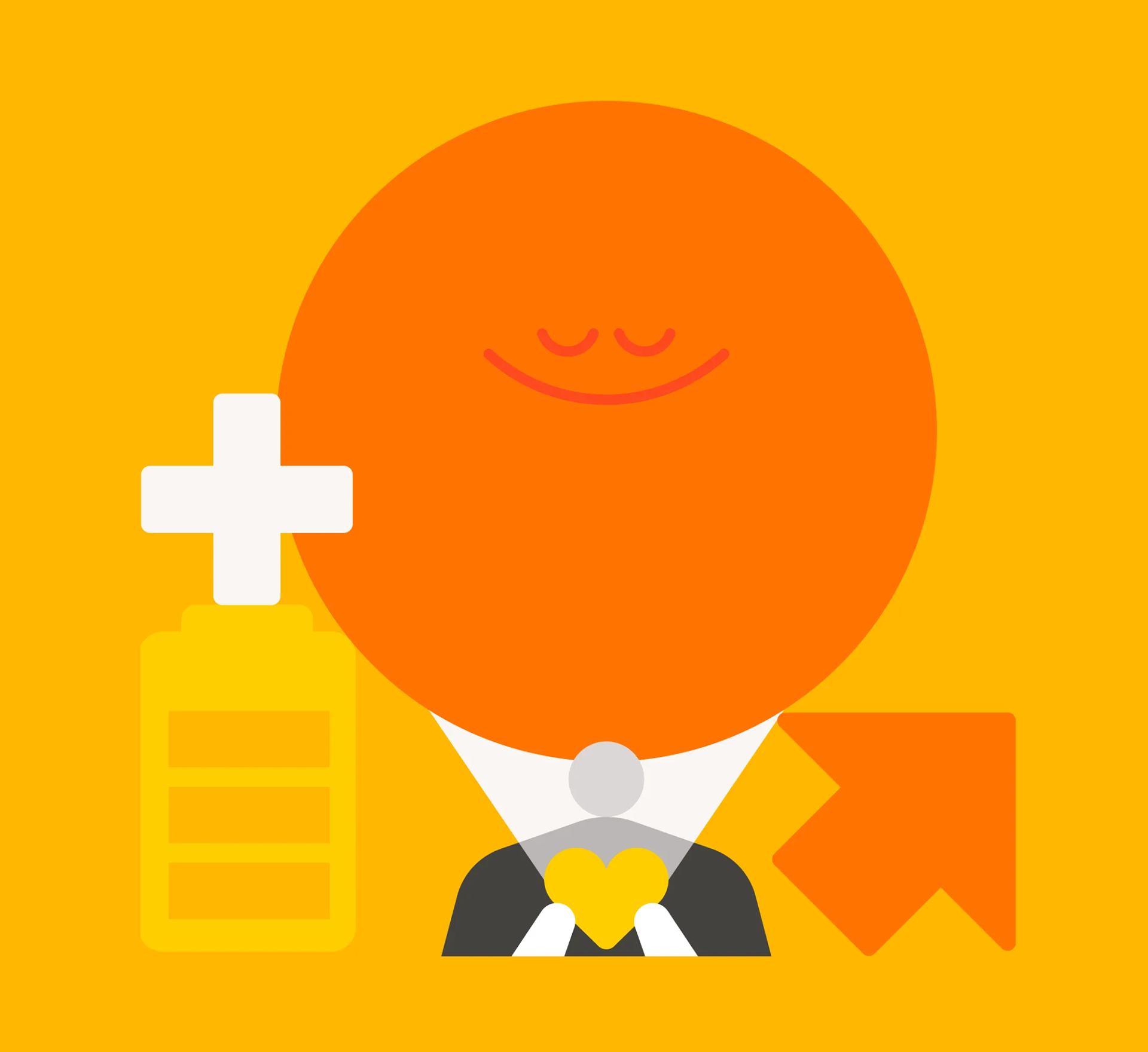
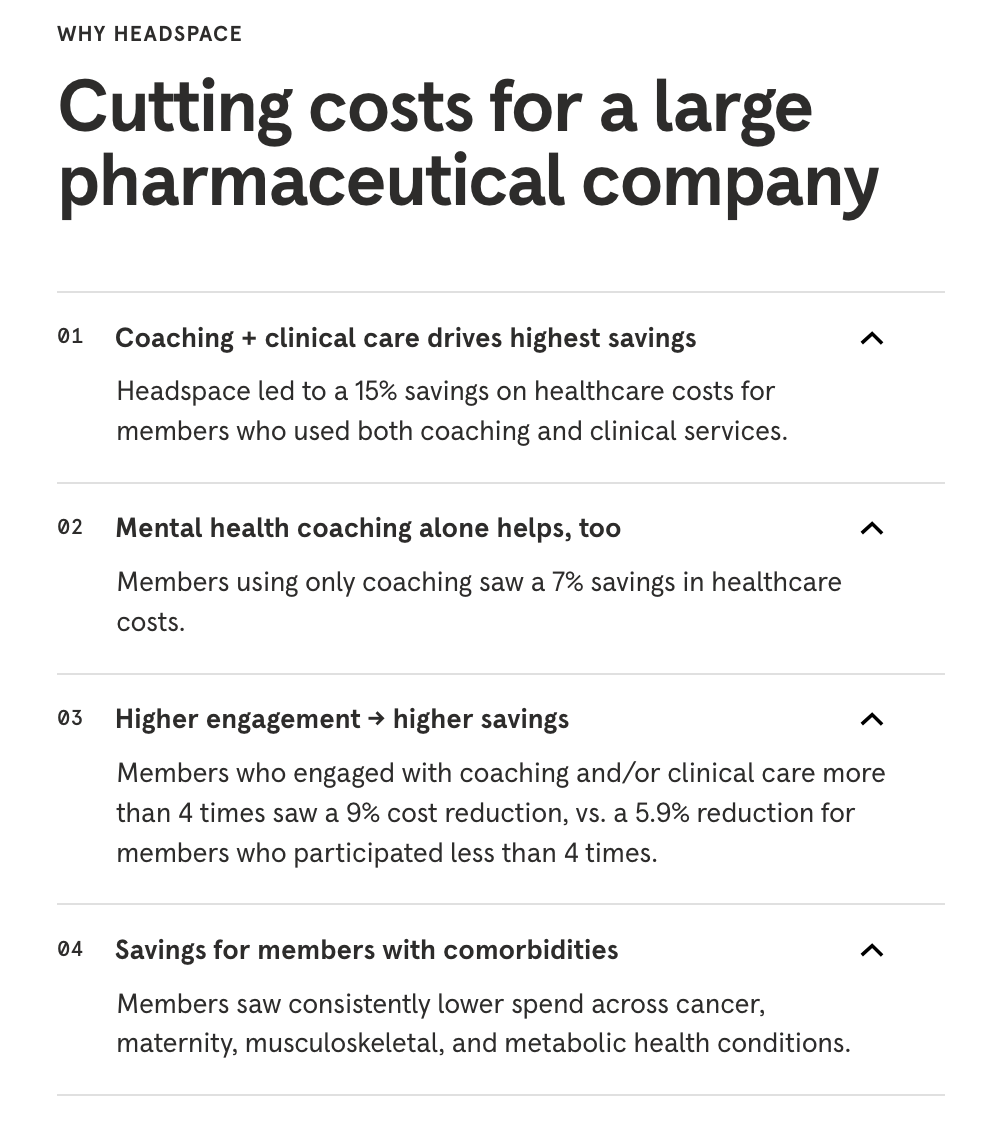

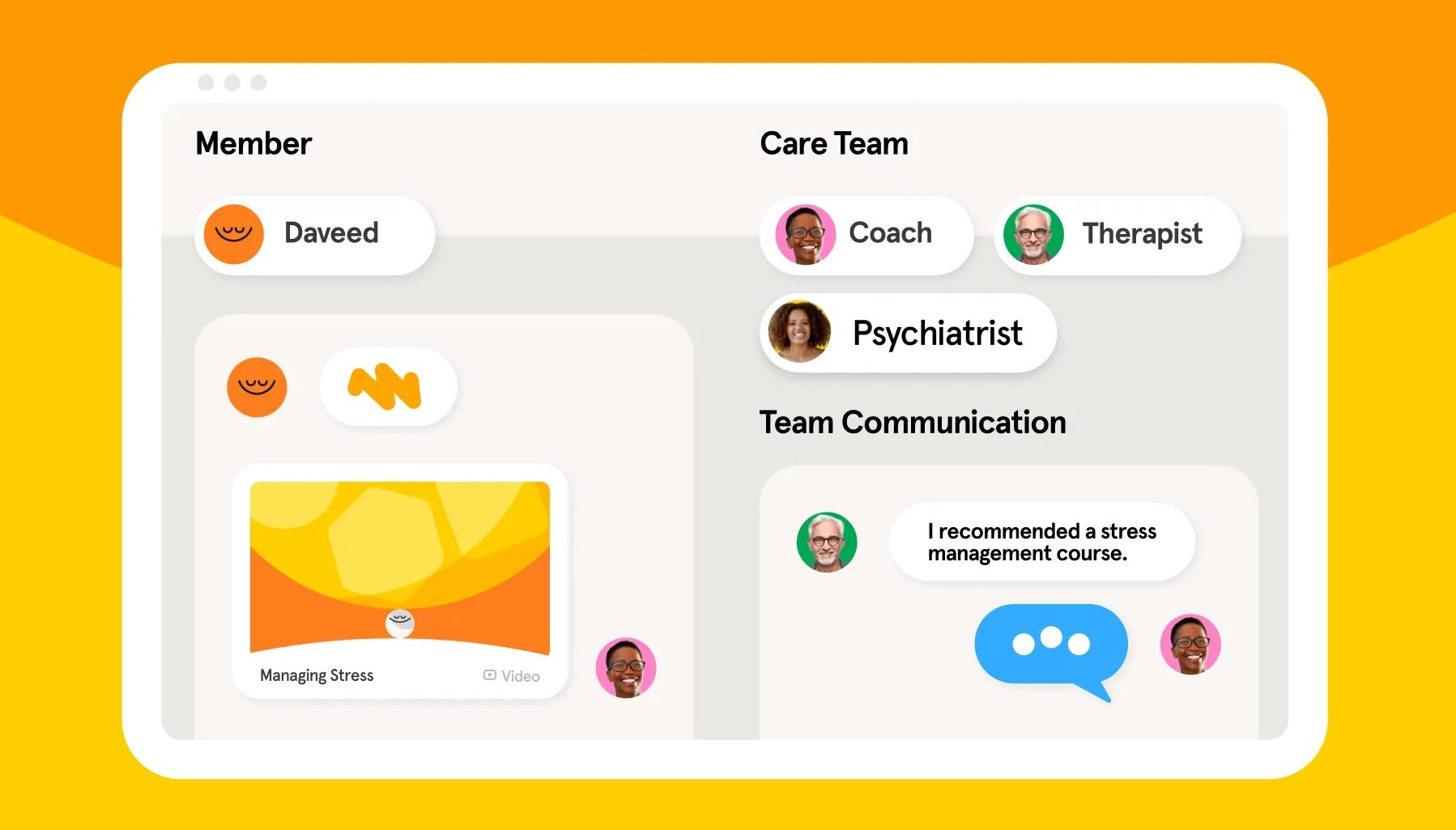
The first iteration of Bringing Ginger Care into the Headspace app
A glimpse into the final UI for provider matching and onboarding for D2C coaching.
Introducing Ebb
An AI-Powered Interactive Journaling Experience
As part of Headspace’s mission to support mental well-being, I helped set the vision for Ebb, an AI-powered empathetic journaling feature designed to help users express, process, and better understand their emotions. By leveraging conversational AI, Ebb guides users through reflective prompts, offering a safe and supportive space to explore their thoughts and feelings.
Beyond journaling, Ebb takes personalized support a step further by recommending curated Headspace content—meditations, exercises, and educational resources—tailored to each user’s emotional state and needs. This dynamic, responsive experience transformed journaling from a passive activity into an engaging, guided practice, building on Headspace's specialty of de-stigmatizing mental health and making it more accessible, interactive, and personalized.
You can learn more about it from this great talk from one of the designers:
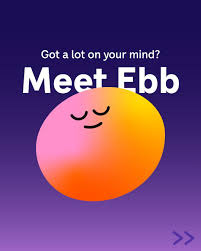
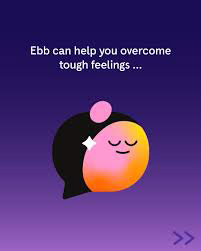
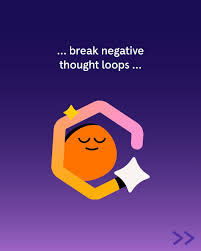
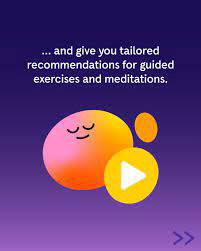
Where form meets function
Maintaining a robust and beautiful Design system
Maintaining a robust and beautiful Design system
A great app is only as good (and scalable) as it's design system. I had the pleasure of leading the team responsible for maintaining the Headspace Apps usability, accessibility, flexibility and probably lots of other "ility" words.
Click here to learn more from a master of his craft, Steven Sczepanik.
Click here to learn more from a master of his craft, Steven Sczepanik.

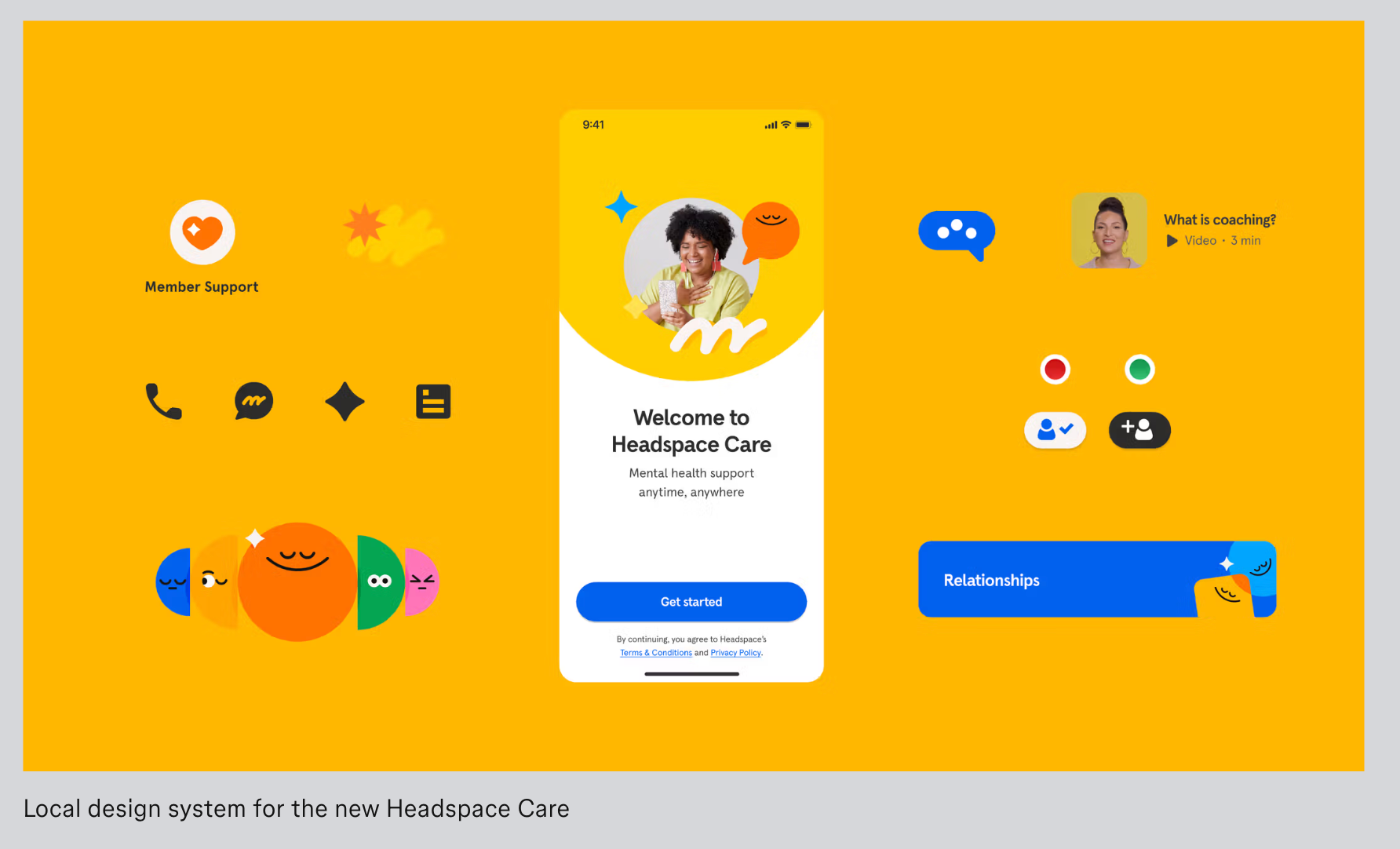
A few examples of the design system
Designing for Care
At Headspace, I had the privilege of designing engaging, clinically backed, and highly accessible experiences that helped millions of people improve their mental well-being. From launching AI-powered journaling and multi-week clinical programs to redesigning the app’s core experiences and integrating coaching and therapy into the platform, my work spanned product innovation, research, service design, and strategy.
I thrive at the intersection of design, technology, and healthcare, leading teams to create meaningful, user-centered solutions that drive engagement, improve outcomes, and scale impact. I’m excited for what’s next—the chance to continue building products that make a real difference in people’s lives.
